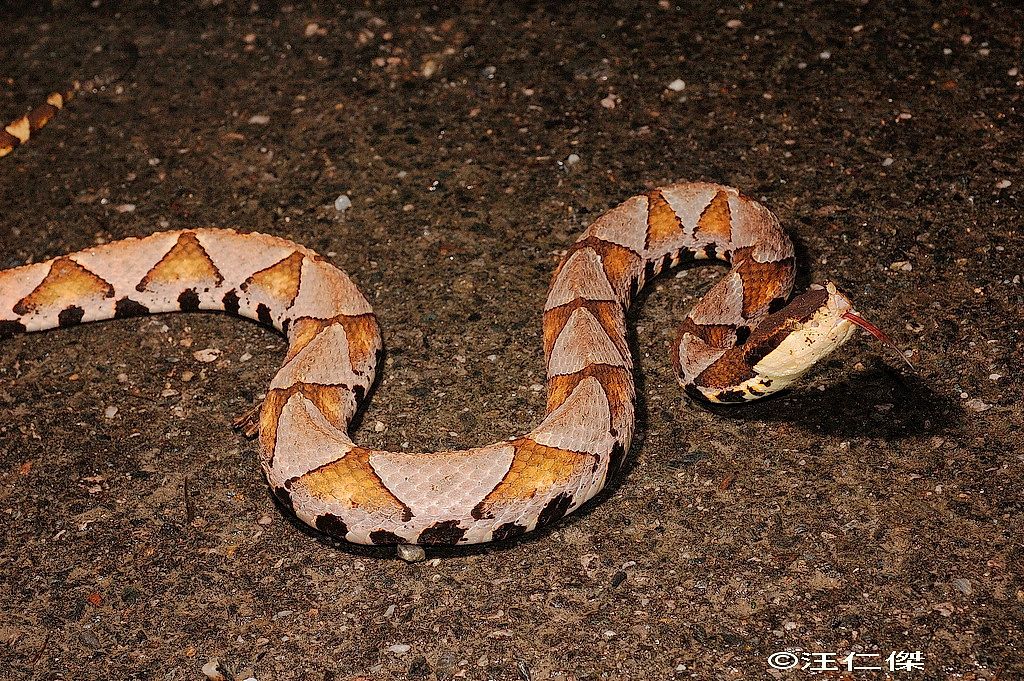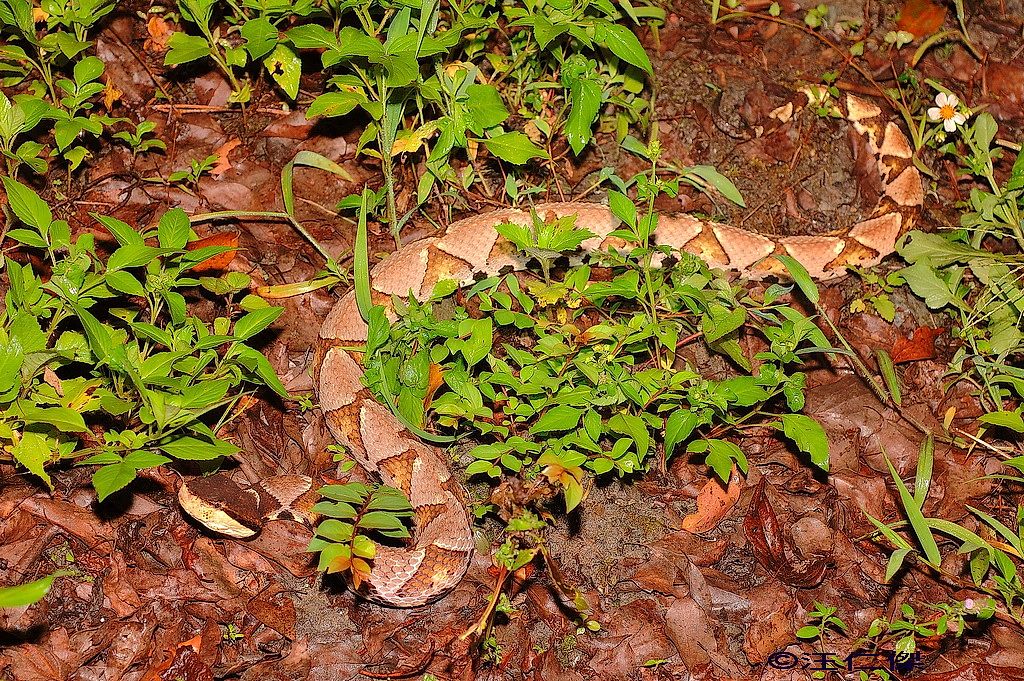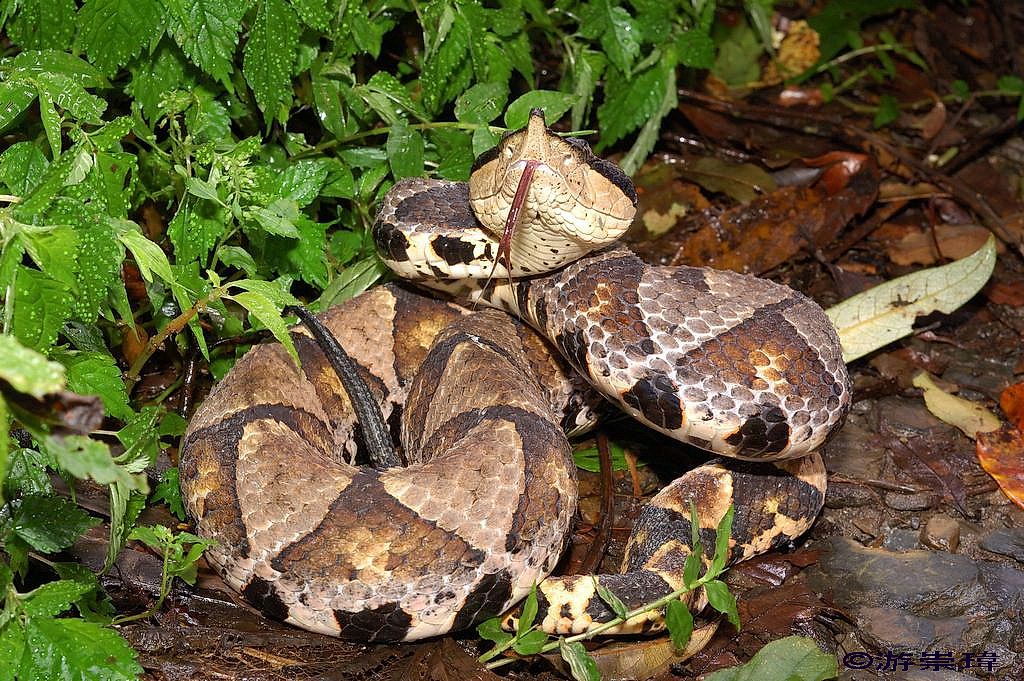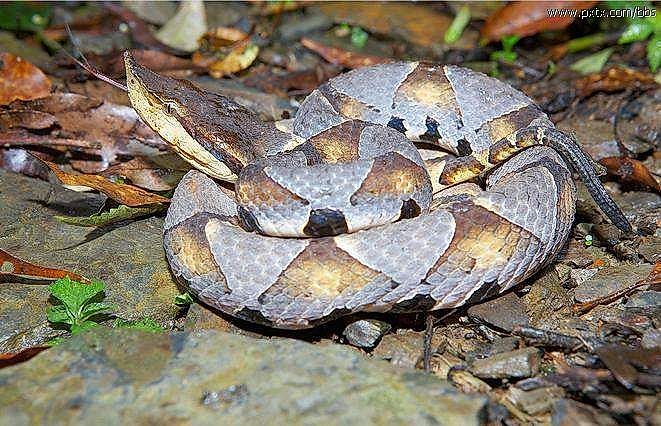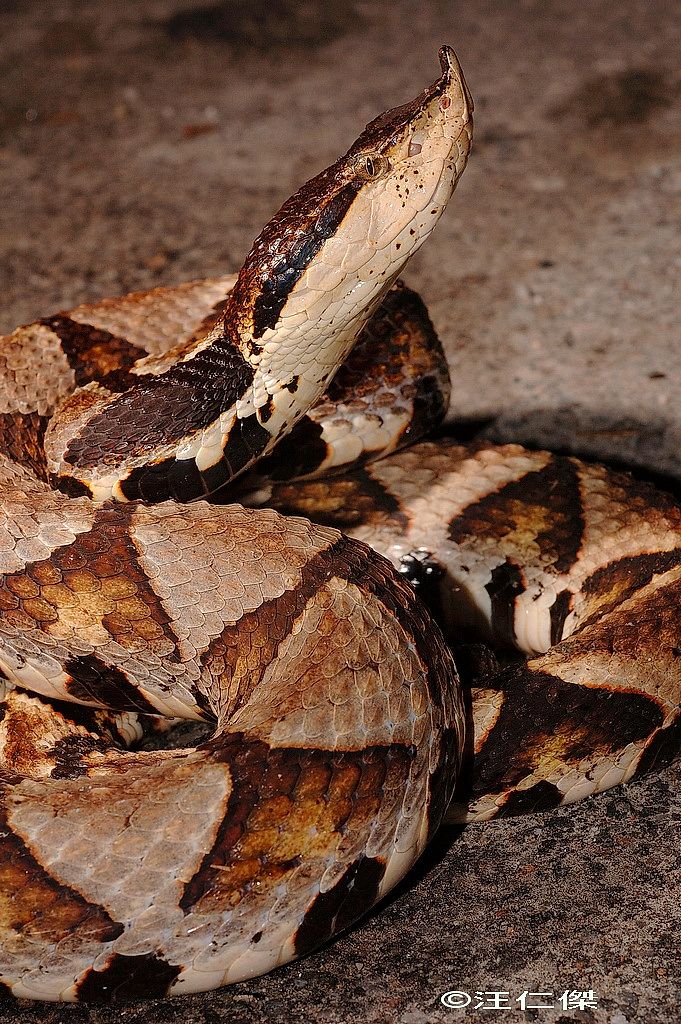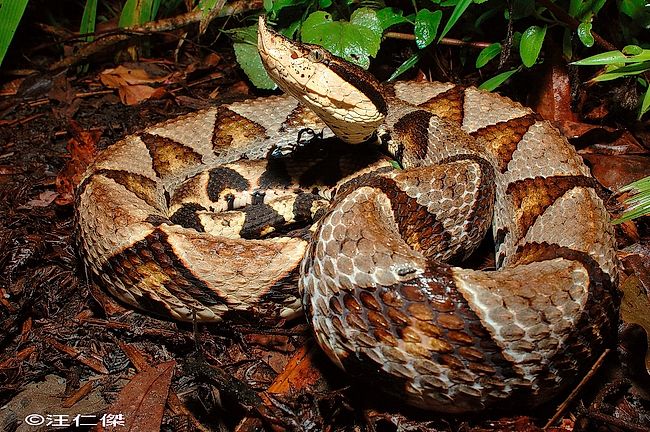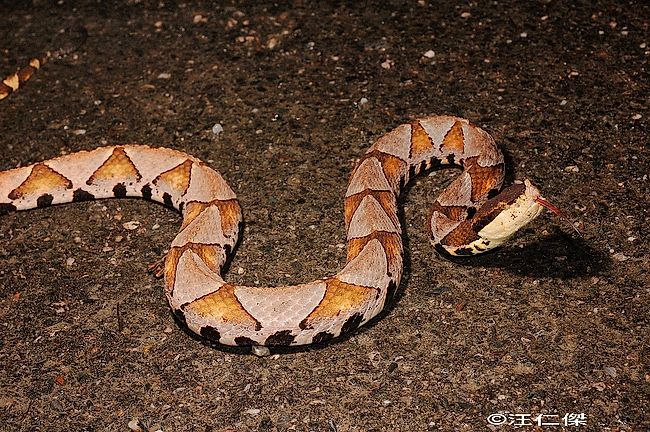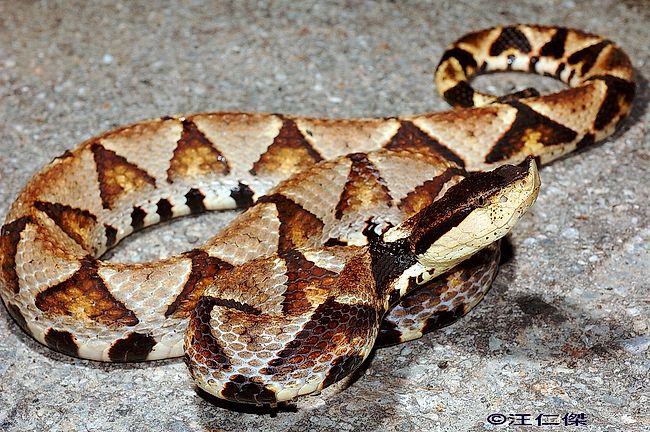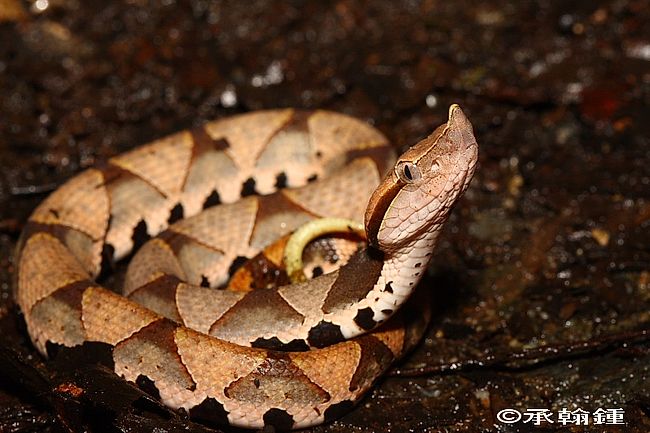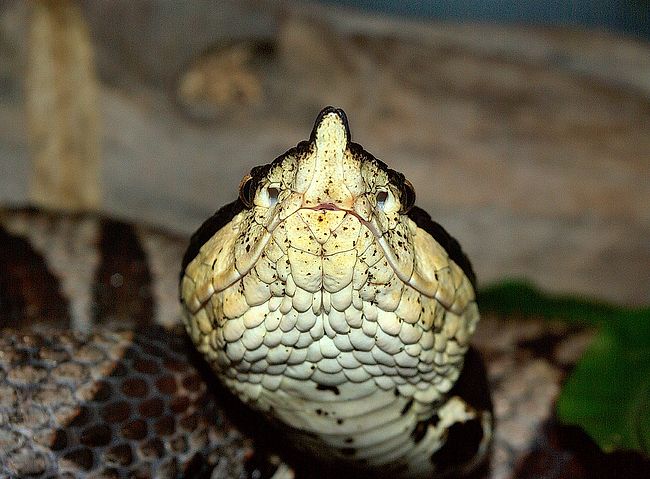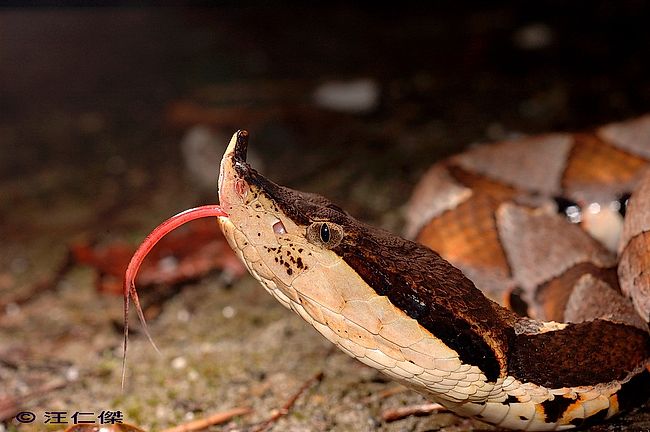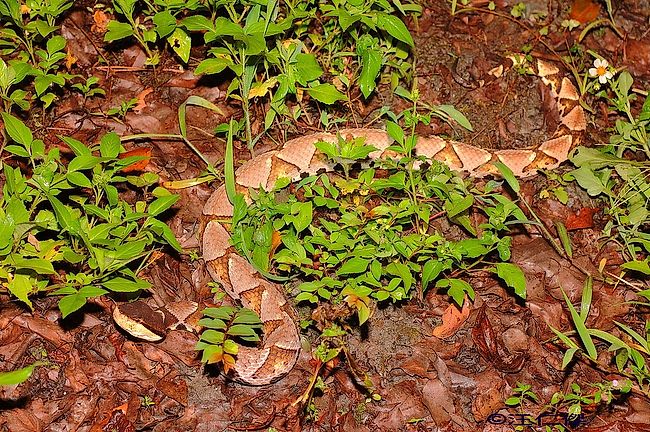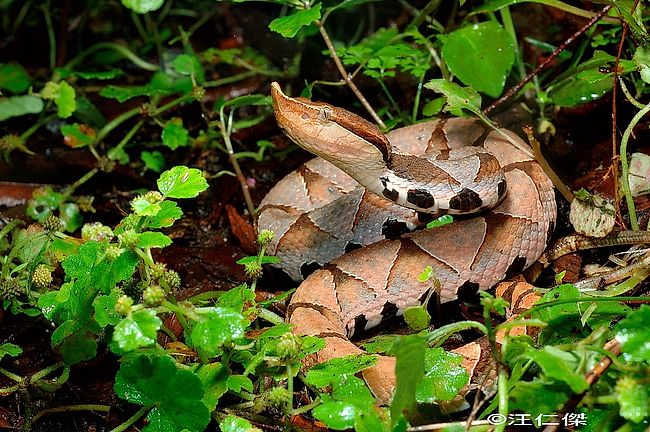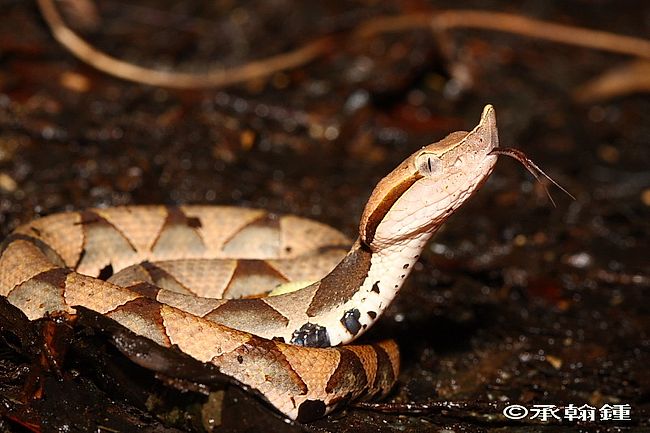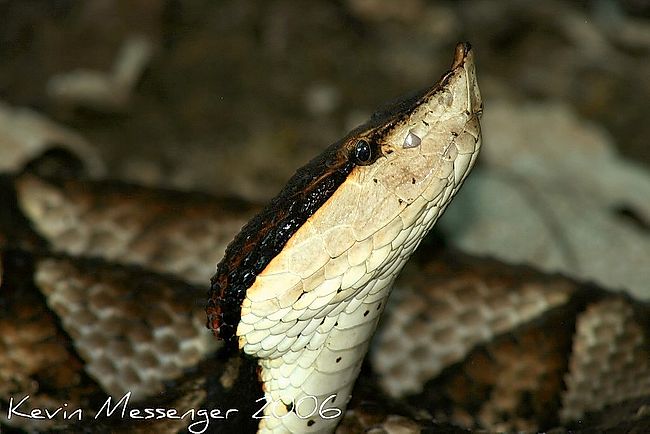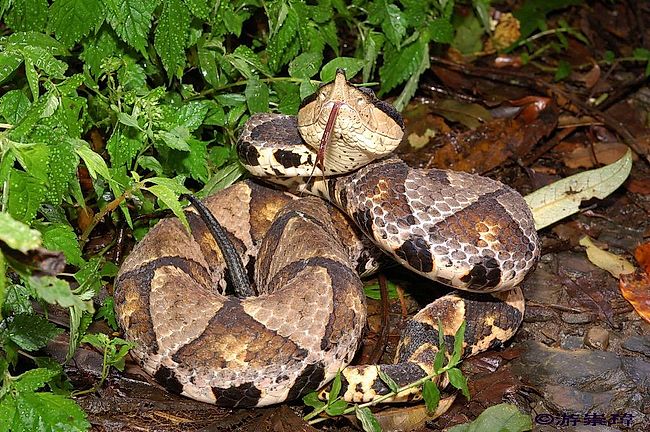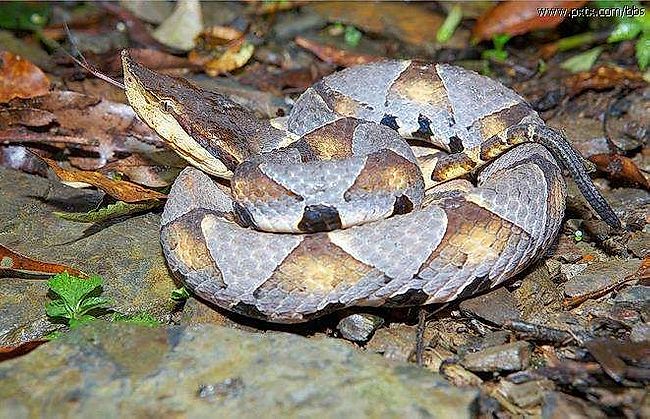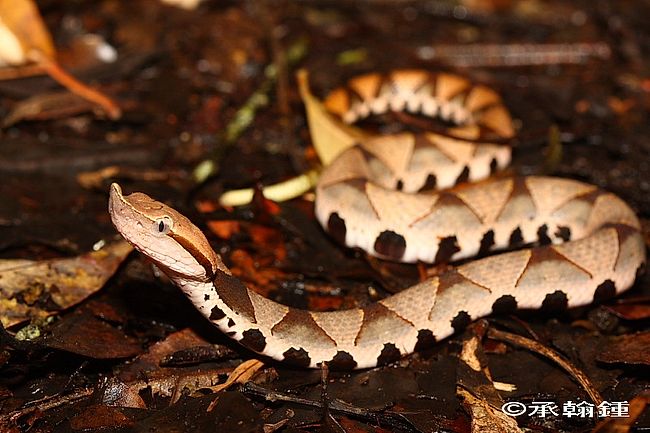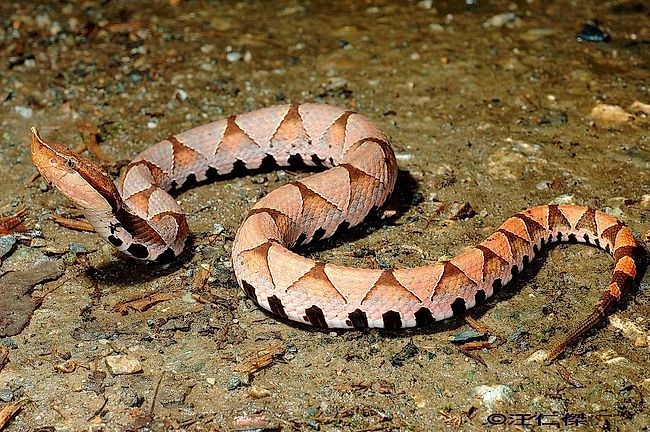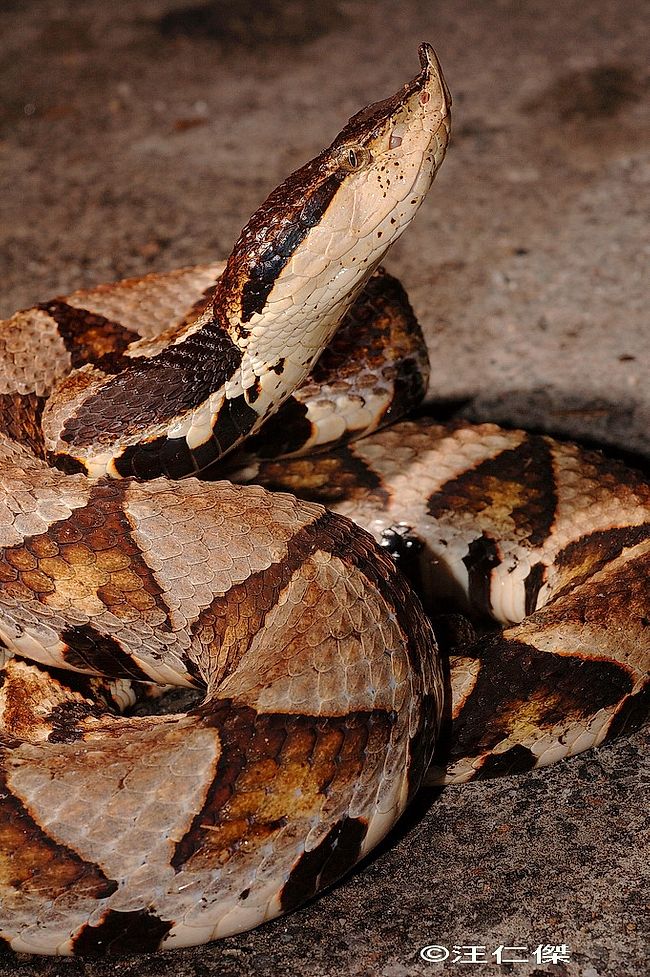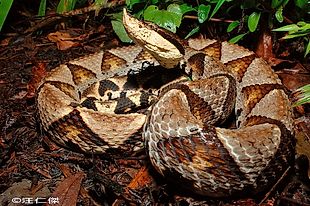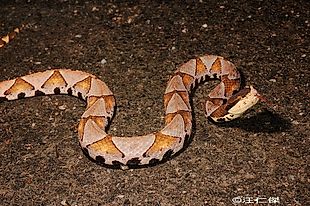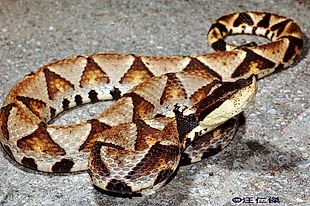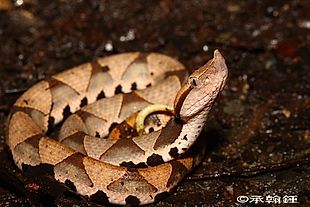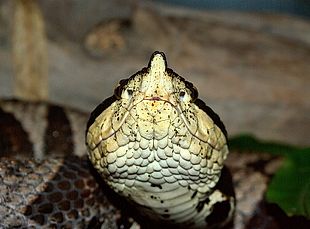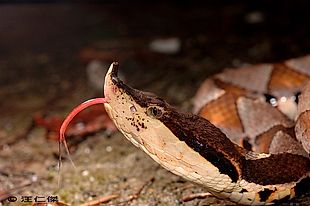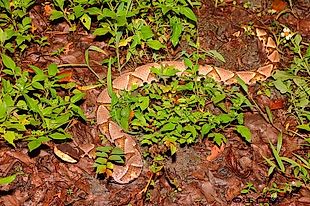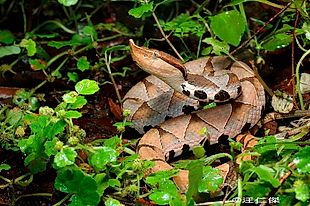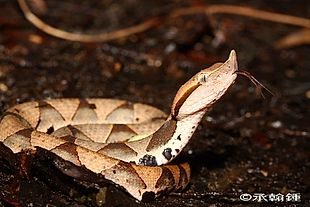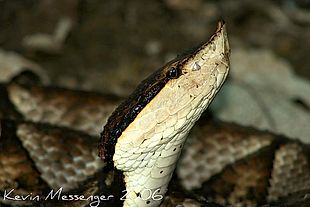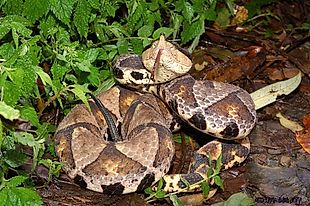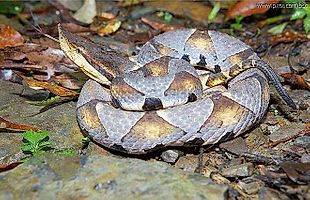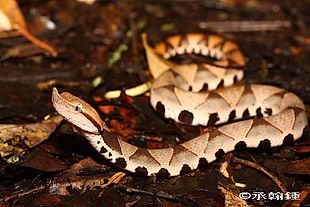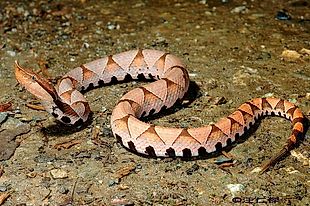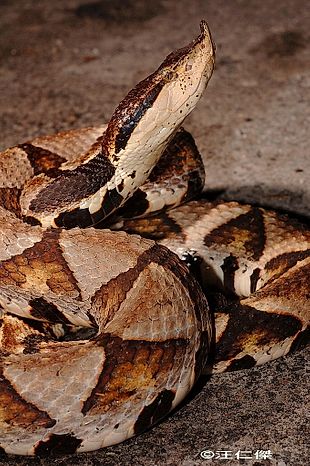Deinagkistrodon acutus
Hundred-Pacer, Chinese Moccasin, Chinese Sharp-nosed Viper
百 步蛇 (bai3bu4she2)
Status: Protected (Cat. II)
HIGHLY VENOMOUS!
Family
Viperidae ; subfamily Crotalinae (Pitvipers)
Max. length
150 cm
Occurrence in Taiwan
Central and southern Taiwan, at altitudes of 500-1500 m. Rare.
Global Distribution
South China (Anhui, Guangdong, Guangxi, Yunnan, Jiangxi, Hunan, Hubei, Zhejiang, Fujian, Guizhou, Sichuan), Taiwan, N. Vietnam, Laos
Description
Medium-sized snake; total length up to 150 cm. There are 17-23 (21 at mid-body) rows of scales, which are strongly keeled and dull. Head is broad, triangular and distinct from neck, with nose rapidly tapering to a knobbed tip, i.e., a prominent turned up snout; body is stout, short, slightly flattened horizontally; tail is short. Eye is medium-sized, near top of head, light brown to brown, dappled, upper third lighter than lower part; iris is narrow, vertical, black, bordered with yellow. There is a prominent pit midway between eye and nostril. The dorsal shields on head are large, broad, dull, with tuberculated surface; the smaller scutes on back of head are strongly keeled. Tongue is red with diffused gray. Fangs are large, retractable, located in a fleshy sheath in anterior part of upper jaw. Upper head is uniformly rich dark brown to chocolate brown, with a prominent dark brown oblique stripe extending from eye posterior to and beyond corner of mouth, and a sharp ridge extending from eye to snout. Sides of head are cream to light yellow, with areas of scattered brown pigment. Upper body and tail are multicolored, with varying shades of dull gray, brown and chocolate. There are 19 to 22 dark triangular designs on side of body, with the apex of each directed dorsally and usually uniting at vertebral line with similar design from opposite side; the base of the triangular design is frequently tinted with salmon or light copper. The dark designs on upper tail form broadly fused triangles. Ventral head is yellow to dirty white, with scattered black spots. Ventral body is white to light cream, with irregular areas of designs of black; a series of larger designs occurs at fairly regular intervals near latero-ventral junction. There is usually a mid-ventral line of black on underside of tail. Anal scale is entire, and subcaudals are paired.
Biology & Ecology
The "Hundred-Pacer" is one of the most easily recognizable Asian pitvipers. To many Taiwanese, the Hundred-Pacer is the quintessential Taiwan snake and is largely regarded as a precious and rare cultural resource. The snake's triangular pattern has inspired entire spiritual design schools among various aboriginal tribes, in particular the Paiwan, who also count among the tribes that revere the snake as a totem: "The traditional culture of the Paiwan aborigine tribe in southern Taiwan centers on the hundred-pacer snake. According to the tribe's creation myth, the ancestral chief of this aboriginal group was born from a ceramic vessel. Whereas the chief emerged from an ancient vessel, the other tribespeople are seen as descendants of the hundred-pacer snake." (Source)
D.acutus is a nocturnal or crepuscular terrestrial snake that inhabits mountainous and forested areas. It preys on frogs, toads, lizards, birds, and mice. It usually mates in March-November; females produce 11-35 eggs per clutch in June-August and habitually protect them. Hatchlings measure about 21 cm in total length. When disturbed, it typically remains in a coiled position ready to strike at any time. This species is most active during or just after rainy periods.
Although it only reaches a maximum length of 150 cm, older specimens can be very stocky and stout, and achieve almost puff adder-like proportions. It is one of the more dangerous snakes of Taiwan, as its venom contains hemorrhagic toxins. However, dangerous animals often acquire exaggerated reputations, and this species is no exception. The popular name "hundred pacer" refers to a local belief that, after being bitten, the victim will only be able to walk 100 paces before expiring. In areas where the snake is regarded with even more awe, it has been called the "fifty pacer." While these appelations no doubt overstate the toxicity of the snake's venom, this species is rightly considered dangerous, and fatalities are not unusual. An antivenin is produced in Taiwan. (Wikipedia)
Etymology
Deinagkistrodon: dein is derived from the Greek 'deinos', which means 'terrible' and was "chosen in reference to the fear and awe with which this snake is held in many parts of its range (1); agkistrodon is derived from the Greek words "agkistron", meaning "fishhook", and "odon", meaning "tooth", a reference to the curved fangs.
Acutus means "sharp, pointed", a reference to the pointy nose.
The Chinese name 百步蛇 (bai3bu4she2) means "Hundred Pace Snake".
Footnotes
(1): Snakes of the Agkistrodon Complex, A Monographic Review; Howard K. Gloyd and Roger Connant. SSAR. 1990. Page 388.
Further Info

